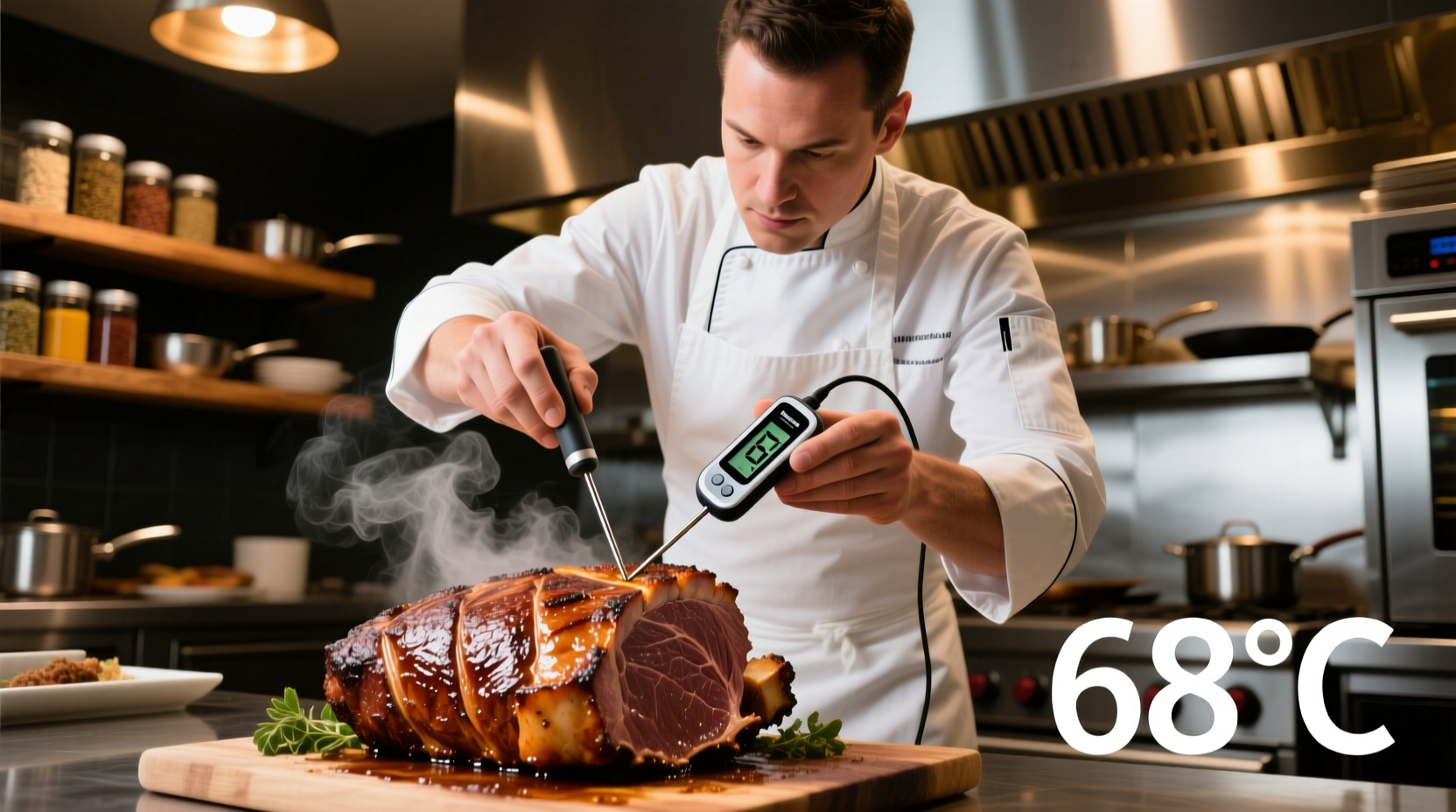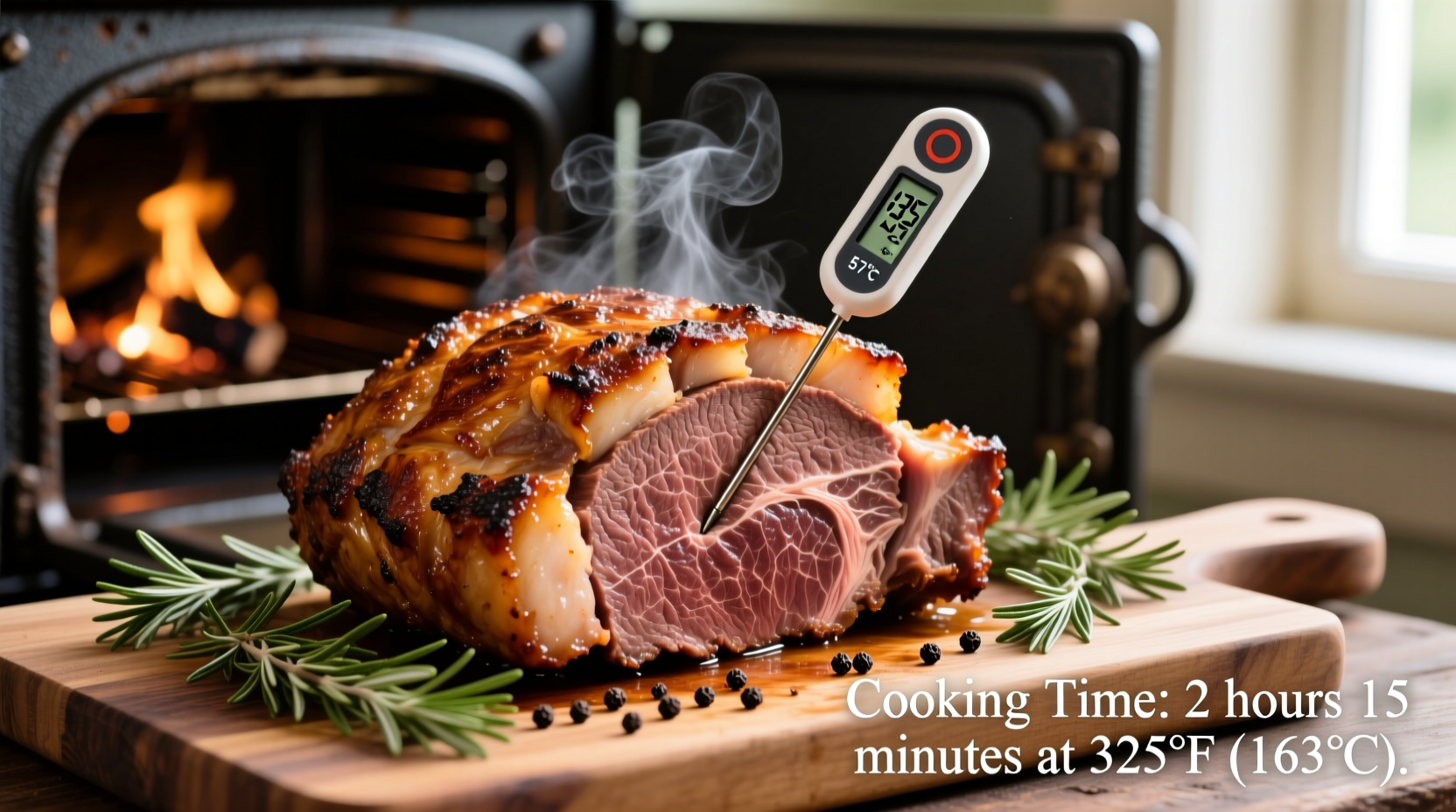Getting roast beef cooking time right separates a succulent centerpiece from a disappointing meal. As a professional chef with decades of experience, I've seen how precise timing transforms this classic dish. Whether you're preparing Sunday dinner or holiday feast, understanding the science behind roast beef cooking ensures perfect results every time.
Why Roast Beef Timing Matters More Than You Think
Many home cooks rely solely on cooking time charts, but temperature monitoring is the real secret to perfection. Modern food safety standards have evolved significantly since the days when "well done" meant hours in the oven. Today's precision cooking methods preserve moisture while ensuring safety.
| Beef Cut Weight | Rare (120-125°F) | Medium Rare (130-135°F) | Medium (140-145°F) |
|---|---|---|---|
| 2-3 lbs (0.9-1.4 kg) | 30-45 minutes | 40-55 minutes | 50-65 minutes |
| 3-4 lbs (1.4-1.8 kg) | 45-60 minutes | 55-70 minutes | 65-80 minutes |
| 4-5 lbs (1.8-2.3 kg) | 60-75 minutes | 70-85 minutes | 80-95 minutes |
Source: USDA Food Safety and Inspection Service temperature guidelines updated 2023
Your Step-by-Step Roast Beef Timeline
Preparation Phase: Setting Up for Success
Remove roast from refrigerator 60-90 minutes before cooking. This critical step ensures even cooking - cold meat develops an overcooked exterior while the center remains underdone. Pat dry thoroughly; moisture prevents proper browning. Season generously with coarse salt and freshly ground pepper at least 45 minutes before cooking to allow penetration.
Cooking Phase: Precision Temperature Control
Preheat oven to 325°F (163°C) - lower temperatures prevent the dreaded gray band around the edges. Place roast on rack in roasting pan, fat side up. Insert oven-safe meat thermometer into thickest part, avoiding bone. Cook until thermometer reads 5-10°F below target temperature (remember carryover cooking will raise temperature during resting).

Resting Phase: The Secret Most Home Cooks Skip
Transfer roast to cutting board, tent loosely with foil, and rest 15-30 minutes depending on size. This crucial step allows juices to redistribute - skipping it causes precious juices to spill out when carving. During resting, temperature typically rises 5-10°F while fibers relax.
Context Matters: When Standard Times Need Adjustment
Several factors require cooking time adjustments:
- Starting temperature: Chilled meat needs 15-20% more cooking time than room-temperature roast
- Oven accuracy: Most home ovens vary by 25°F - use an independent oven thermometer
- Cut shape: Tapered cuts like sirloin tip cook faster at thinner ends
- Thermometer type: Instant-read models require oven removal, slowing cooking slightly
Avoid These 3 Common Roast Beef Mistakes
- Guessing doneness: Visual cues are unreliable - always use a calibrated thermometer. The USDA's Food Safety and Inspection Service confirms visual estimation errors exceed 30°F in home cooking tests.
- Cutting too soon: Resting isn't optional - premature carving loses up to 40% of juices according to American Meat Science Association studies.
- Overcrowding the pan: Placing vegetables underneath steams rather than roasts the meat, creating uneven texture.
Safety First: Modern Temperature Standards
Food safety guidelines have evolved significantly. The USDA now confirms medium-rare (130-135°F) is safe for whole muscle cuts like roast beef, eliminating the need for well-done preparation. This represents a major shift from 1990s recommendations that required 160°F for all beef. Always verify thermometer calibration annually - an inaccurate thermometer creates false security.
Perfect Carving Technique
After resting, slice against the grain using a sharp carving knife. For tenderloin or ribeye, cut 1/4-inch slices; for tougher cuts like round, slightly thicker slices work better. Arrange slices slightly overlapping on a warmed platter - this presentation retains heat while showcasing the perfect pink interior.
Troubleshooting Guide
Dry roast? Likely overcooked or insufficient resting time. Next time, remove 5°F earlier and rest 5 minutes longer.
Uneven cooking? Rotate pan halfway through cooking and ensure proper rack placement in oven center.
Bland flavor? Season earlier and consider dry brining overnight for deeper flavor penetration.











 浙公网安备
33010002000092号
浙公网安备
33010002000092号 浙B2-20120091-4
浙B2-20120091-4